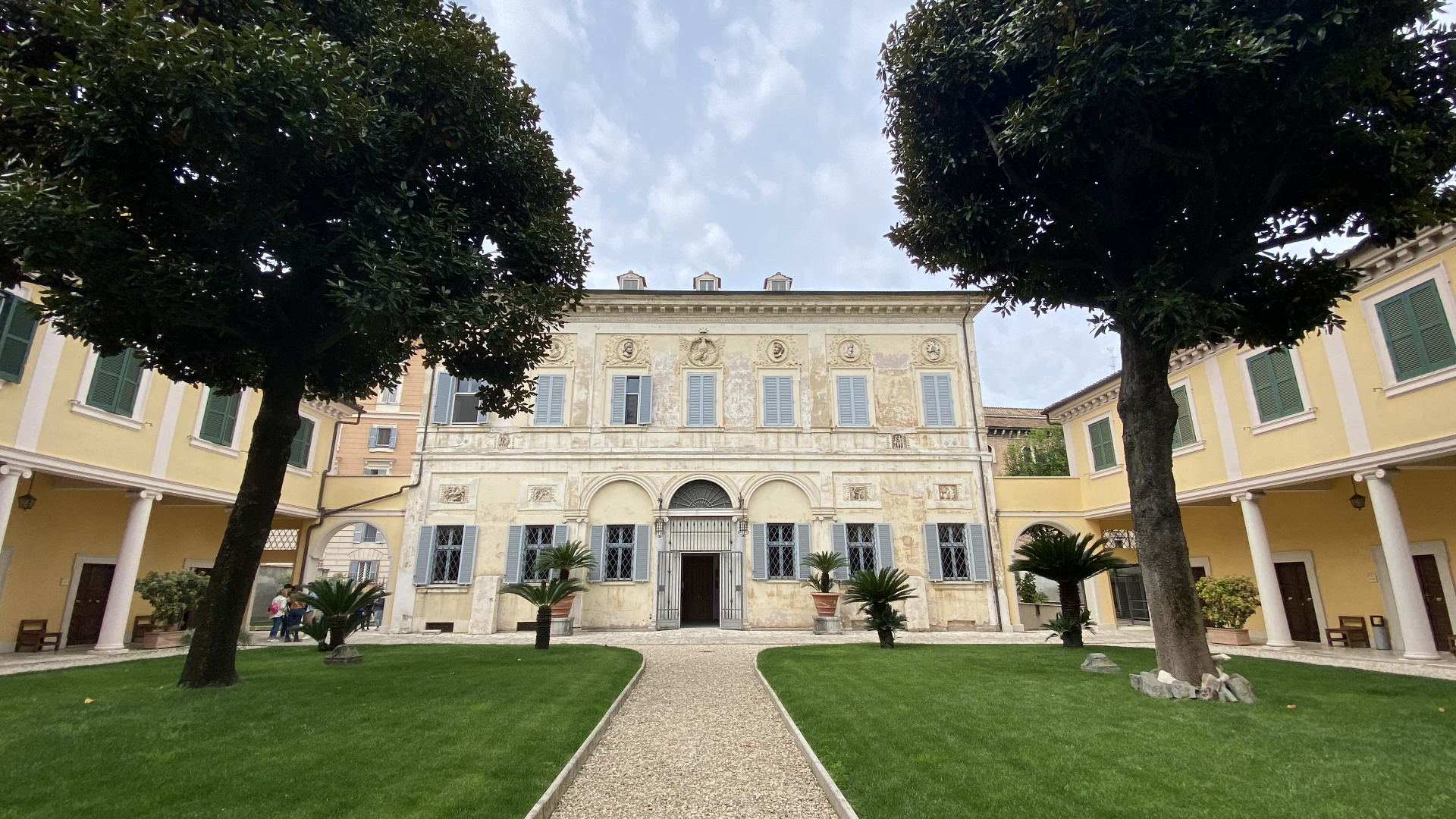
Built in the early 1600s at the behest of the Marquis Vincenzo Giustiniani, designed by Carlo Lambardi, the elegant two-storey casino, with a loggia opening onto a large garden, is a typical example of the late Mannerist style in Rome. The son of the Marquis, Andrea Giustiniani, later on, embellished the residence by inserting bas-reliefs and sarcophagi from the Roman era, sculptures and stuccoes in the facades, according to the fashion of the time.
When the villa was sold in 1802, the new owner Carlo Massimo gave the interior of the Casino the aspect that we can still admire today: in fact, he had the three rooms on the ground floor frescoed with scenes from the masterpieces of Dante, Ariosto and Tasso. To be in charge of their realization was a group of painters from Northern Europe, known as Nazarenes both for their lifestyle and, perhaps, for their long hair and unkempt beards that made them look like Jesus of Nazareth. Catholics by birth or converted to Catholicism, the Nazarenes rebelled against academic classicism and took the great artists of the past, such as Giotto, Raphael and Michelangelo, as their model.
The Casino represents the most important testimony of their artistic activity in Rome: a unique pictorial cycle for its originality and refinement, a fascinating journey into Italian literature. In the Room dedicated to Dante and the Divine Comedy, the realism of the representation of Hell is striking, with Dante and Virgil flanked by Minos, terrifying-looking devils and some of the most famous damned, such as Count Ugolino. The fights between paladins and Muslims instead make us relive the stories of Orlando Furioso in Ariosto's Room, but the scene of the love between Angelica and Medoro caught together by Orlando can’t be missed, because seeing this, he will lose his sense to find it finally on the moon. The most lyrical episodes of the liberated Jerusalem are frescoed in the Tasso room, with the amorous sufferings of Armida and Rinaldo, Olindo and Sofronia and, above all, Tancredi and Clorinda.
On the death of the Marquis Massimo, the Casino was inherited by his brother Massimiliano and his sister-in-law Christina of Saxony, who had some nude scenes retouched, considering them indecent. During the German occupation of Rome, the Casino housed the command of the German police which operated in the adjacent barracks in via Tasso (now home to the Historical Museum of Liberation). The building has been owned by the Franciscan delegation of the Holy Land since 1947: the friars were responsible for the construction of the two side wings.
Informationen
Can be visited without reservation
Tuesdays and Thursdays 9.00-12.00/16.00-18.00
Sundays 10.00-12.00
 Condividi
Condividi
Location
Um mehr über alle barrierefreien Dienste zu erfahren, besuchen Sie den Abschnitt barrierefreies Rom.











































